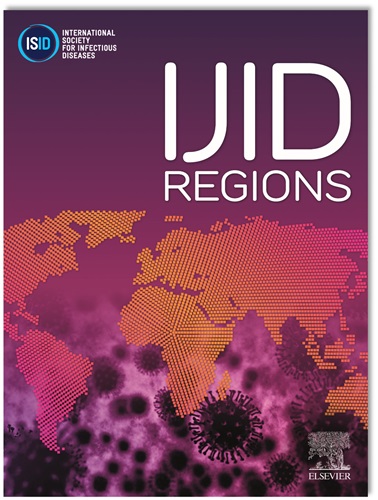QuantiFERON-TB supernatant-based biomarkers predicting active tuberculosis progression
IF 4.8
2区 医学
Q1 INFECTIOUS DISEASES
引用次数: 0
Abstract
Background
Despite the higher specificity and reliability of detecting latent tuberculosis (TB) infection, Mycobacterium tuberculosis-specific interferon (IFN)-γ release assays do not perform satisfactorily in predicting the risk of active TB (ATB) development. It is crucial to identify new biomarkers with high predictive accuracy to identify individuals bearing a high risk of progression.
Methods
This was a sub-study of an open-label, randomized clinical trial for prevention of TB in silicosis patients. Twenty-six participants were diagnosed with ATB within 37-month’ follow-up. They were defined as TB progressors and matched in a 1:2 ratio with 52 TB nonprogressors.
Results
We analyzed expression of 45 cytokines in QuantiFERON supernatants from TB progressors and nonprogressors, and granulocyte–macrophage colony-stimulating factor, vascular endothelial growth factor, interleukin (IL)-3, IFN-γ-induced protein 10, IL-10, and IL-9 outperformed IFN-γ as predictive markers.
Conclusion
These findings highlight the potential of new biomarkers in identifying individuals with high risk of TB to undergo early intervention.
Trial registration: ClinicalTrials.gov number: NCT02430259.
基于QuantiFERON-TB上清液的生物标志物预测活动性结核病进展。
背景:尽管检测潜伏结核感染具有更高的特异性和可靠性,但结核分枝杆菌特异性干扰素(IFN)-γ释放试验在预测活动性结核发展风险方面的效果并不令人满意。识别具有高预测准确性的新生物标志物对于识别具有高风险进展的个体至关重要。方法:这是一项预防矽肺患者结核病的开放标签随机临床试验的子研究。26名参与者在37个月的随访中被诊断为活动性结核病。他们被定义为结核病进展者,并以1:2的比例与52名结核病非进展者匹配。结果:我们分析了结核进展者和非进展者的QuantiFERON上清液中45种细胞因子的表达,粒细胞-巨噬细胞集落刺激因子、血管内皮生长因子、白细胞介素(IL)-3、IFN-γ诱导蛋白10 (IP-10)、IL-10和IL-9作为预测指标优于IFN-γ。结论:这些发现强调了新的生物标志物在识别结核病高风险个体进行早期干预方面的潜力。试验注册:ClinicalTrials.gov号码:NCT02430259。
本文章由计算机程序翻译,如有差异,请以英文原文为准。
求助全文
约1分钟内获得全文
求助全文
来源期刊
CiteScore
18.90
自引率
2.40%
发文量
1020
审稿时长
30 days
期刊介绍:
International Journal of Infectious Diseases (IJID)
Publisher: International Society for Infectious Diseases
Publication Frequency: Monthly
Type: Peer-reviewed, Open Access
Scope:
Publishes original clinical and laboratory-based research.
Reports clinical trials, reviews, and some case reports.
Focuses on epidemiology, clinical diagnosis, treatment, and control of infectious diseases.
Emphasizes diseases common in under-resourced countries.

 求助内容:
求助内容: 应助结果提醒方式:
应助结果提醒方式:


